-
 Bitcoin
Bitcoin $87,985.5737
0.72% -
 Ethereum
Ethereum $1,574.8026
-3.90% -
 Tether USDt
Tether USDt $0.9999
0.00% -
 XRP
XRP $2.0783
-1.83% -
 BNB
BNB $600.4630
-0.57% -
 Solana
Solana $138.7268
-1.43% -
 USDC
USDC $1.0000
0.00% -
 Dogecoin
Dogecoin $0.1604
-0.49% -
 TRON
TRON $0.2468
0.93% -
 Cardano
Cardano $0.6232
-2.68% -
 Chainlink
Chainlink $13.0447
-3.65% -
 UNUS SED LEO
UNUS SED LEO $9.1903
-2.36% -
 Avalanche
Avalanche $19.7884
-0.95% -
 Stellar
Stellar $0.2455
-2.64% -
 Toncoin
Toncoin $2.9136
-3.77% -
 Shiba Inu
Shiba Inu $0.0...01234
-3.12% -
 Sui
Sui $2.2351
0.79% -
 Hedera
Hedera $0.1701
-0.34% -
 Bitcoin Cash
Bitcoin Cash $343.8870
1.52% -
 Hyperliquid
Hyperliquid $18.4355
1.81% -
 Litecoin
Litecoin $78.5146
-0.23% -
 Polkadot
Polkadot $3.7235
-4.61% -
 Dai
Dai $1.0000
0.00% -
 Bitget Token
Bitget Token $4.4307
-2.55% -
 Ethena USDe
Ethena USDe $0.9992
-0.01% -
 Pi
Pi $0.6322
-0.72% -
 Monero
Monero $215.4354
-0.09% -
 Pepe
Pepe $0.0...07934
0.95% -
 Uniswap
Uniswap $5.2398
-3.49% -
 OKB
OKB $50.8827
-0.49%
What is the minting process of NFT?
Minting an NFT involves choosing a blockchain, creating the digital asset, selecting a platform, setting up a digital wallet, uploading the asset, paying a transaction fee (gas fee), and then managing post-minting considerations like royalties and marketplace fees.
Feb 28, 2025 at 08:37 pm
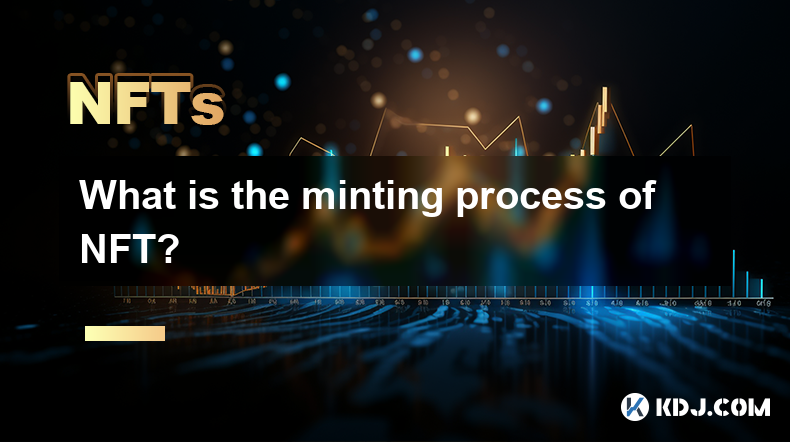
What is the Minting Process of NFTs?
Key Points:
- Understanding NFTs and their digital nature: NFTs are unique digital assets representing ownership of a specific item. Unlike cryptocurrencies which are fungible (interchangeable), NFTs are non-fungible, meaning each one is distinct and cannot be replaced with another. This uniqueness is crucial to understanding the minting process.
- Choosing a blockchain: The minting process takes place on a blockchain, a distributed, immutable ledger. Different blockchains have varying fees, speeds, and functionalities, impacting the minting process and the overall cost.
- Creating the NFT artwork/asset: This involves preparing the digital file—an image, video, audio, or even a 3D model—that will represent the NFT. The quality and preparation of this asset are crucial for its perceived value and marketability.
- Selecting a minting platform: Numerous platforms exist for creating and minting NFTs, each with its own user interface, fees, and features. Some platforms offer more control over the minting process, while others are more user-friendly but might charge higher fees.
- Setting up a digital wallet: A digital wallet is necessary to store your created NFT after minting and to interact with the blockchain. Different wallets support different blockchains and have varying levels of security features.
- Minting the NFT: This is the actual process of uploading your prepared asset to the chosen blockchain via the selected minting platform, recording its ownership details on the blockchain. This step often involves paying a transaction fee (gas fee) to the blockchain network.
- Post-minting considerations: Once minted, the NFT can be listed for sale on marketplaces or held in the wallet. Understanding royalty mechanisms, marketplace fees, and potential future updates are crucial for long-term management.
Step 1: Understanding NFTs and their Digital Nature
NFTs, or Non-Fungible Tokens, are cryptographic tokens on a blockchain that represent ownership of a unique digital or physical asset. This asset could be anything from digital artwork, collectibles, in-game items, virtual real estate, to even physical items with a digital certificate of authenticity. The uniqueness of an NFT is ensured through its token ID, which is a unique identifier on the blockchain, making it distinct from other NFTs. Unlike cryptocurrencies like Bitcoin or Ethereum, which are fungible (meaning one Bitcoin is interchangeable with another), NFTs are non-fungible, representing unique ownership rights. This fundamental difference is why minting is a crucial process. The process creates this unique digital fingerprint and links it to the chosen asset. Understanding this digital nature is paramount because the entire process relies on the immutability and verifiable nature of blockchain technology. The blockchain acts as a public, transparent ledger, recording all transactions related to the NFT, ensuring transparency and preventing duplication or counterfeiting. The process of minting is effectively the creation of this verifiable record of ownership on the blockchain, transforming a digital file into a unique, verifiable asset with demonstrable proof of ownership. The ownership details, including the creator and subsequent owners, are permanently recorded on the blockchain, creating a verifiable chain of custody. This makes NFTs more than just digital files; they become verifiable assets with provable ownership. The entire concept hinges on the immutable and transparent nature of blockchain technology.
Step 2: Choosing a Blockchain
The choice of blockchain significantly impacts the NFT minting process. Each blockchain has its own set of characteristics, including transaction fees (often referred to as "gas fees"), transaction speeds, and available functionalities. Ethereum, one of the earliest and most popular blockchains for NFTs, has a large and established ecosystem but can be expensive due to high gas fees and network congestion. Other blockchains like Solana, Tezos, Polygon, and Flow have emerged as alternatives, offering lower gas fees and faster transaction speeds. The choice depends on the project's needs and priorities. For instance, a large-scale NFT project might prioritize a blockchain with high throughput and scalability to handle many transactions efficiently, while a smaller project might opt for a blockchain with lower gas fees to reduce costs. Furthermore, the choice of blockchain influences the accessibility and potential audience for the NFT. A blockchain with a larger user base and established NFT marketplaces may offer greater visibility and liquidity for the minted NFT. Beyond fees and speed, the specific functionalities of a blockchain also play a role. Some blockchains support specific features that might be essential for certain types of NFTs, such as enhanced metadata capabilities or integrated royalty mechanisms. Understanding these nuances is critical in choosing the right blockchain for optimal minting and post-minting management. Thorough research into different blockchains and their associated costs, speeds, and capabilities is a crucial step in the overall NFT minting process.
Step 3: Creating the NFT Artwork/Asset
Before minting an NFT, the digital asset itself must be prepared. This involves creating or obtaining the digital file that will represent the NFT. This could be a digital image (JPEG, PNG, GIF), video (MP4, MOV), audio (MP3, WAV), 3D model, or even a combination of these. The quality of this asset is crucial; a high-resolution, well-crafted piece will generally command a higher price and greater interest than a low-quality asset. Beyond quality, the preparation stage also involves considering the file size. Larger files often result in higher gas fees during minting. Optimization techniques, such as compression without significant loss of quality, are essential to balance file size and quality. Metadata is another crucial aspect. Metadata is data about the data, providing additional information about the NFT, such as its title, description, artist's name, and any other relevant details. This metadata is embedded within the NFT and helps to provide context and value. It's crucial to create comprehensive and accurate metadata to enhance the discoverability and understanding of the NFT. Furthermore, the legal aspects should be considered during the creation stage. Copyright and ownership rights must be clearly defined and documented to avoid potential legal disputes in the future. The process of creating and preparing the digital asset is not merely about creating an appealing visual; it's about crafting a complete package that includes the asset itself, its metadata, and the legal framework surrounding its creation and ownership.
Step 4: Selecting a Minting Platform
Minting platforms, also known as NFT marketplaces or minting services, provide the interface and tools to upload the prepared asset and mint it onto the chosen blockchain. These platforms vary widely in terms of their user interface, fees, features, and supported blockchains. Some platforms, like OpenSea, Rarible, and Mintable, offer user-friendly interfaces suitable for beginners, while others provide more advanced features and customization options for experienced users. The choice of platform depends on factors such as ease of use, gas fees, features offered, supported blockchains, and the platform's reputation and security. Some platforms offer a simpler, more streamlined minting process with a user-friendly interface, while others offer greater control and customization options but may have a steeper learning curve. Understanding the fees charged by each platform is also crucial. These fees typically consist of platform fees and gas fees paid to the blockchain network. Gas fees can fluctuate based on network congestion, so monitoring these fees is important to optimize costs. Security is another key consideration. Choosing a reputable platform with robust security measures is crucial to protect your assets and prevent unauthorized access. Researching different platforms, comparing their features, fees, and security measures, is essential to select the most suitable platform for the specific project.
Step 5: Setting Up a Digital Wallet
Before minting an NFT, it's necessary to set up a digital wallet that supports the chosen blockchain. A digital wallet is a software or hardware application that stores your cryptocurrency and NFTs. Several different types of wallets exist, each with its own advantages and disadvantages. Software wallets are accessible via a computer or mobile device, while hardware wallets provide enhanced security by storing your private keys offline. Choosing the right wallet depends on factors like security requirements, ease of use, and the level of technical expertise. It's important to select a wallet that supports the specific blockchain used for minting. For instance, if you're minting an NFT on Ethereum, you'll need a wallet that supports Ethereum. Once the wallet is set up, you'll need to fund it with the cryptocurrency required to pay for gas fees during the minting process. The amount of cryptocurrency needed will vary based on the chosen blockchain, the complexity of the NFT, and network congestion. It's crucial to have sufficient funds in your wallet to cover these fees to avoid delays or failed transactions. Understanding the security implications of digital wallets is also crucial. Protecting your private keys is paramount to prevent unauthorized access to your NFTs and cryptocurrency. Implementing strong passwords, using two-factor authentication, and choosing a reputable wallet provider are essential security practices.
Step 6: Minting the NFT
The actual minting process involves uploading the prepared digital asset and its metadata to the chosen minting platform. This involves connecting your digital wallet to the platform and following the platform's instructions to initiate the minting process. During this process, you'll be prompted to confirm the transaction, which will include paying the gas fee to the blockchain network. The gas fee compensates the miners or validators for processing and verifying the transaction, adding the NFT to the blockchain. The amount of the gas fee can vary depending on network congestion. High network congestion can lead to higher gas fees, while lower congestion can result in lower fees. It's essential to monitor the gas fee before confirming the transaction to ensure that you have sufficient funds in your wallet. Once the transaction is confirmed, the NFT is minted, and its unique token ID is recorded on the blockchain. This means the NFT is now permanently recorded on the blockchain, and its ownership details are verifiable. The minting process also creates a permanent record of the NFT's creation, linking it to the creator and establishing a clear chain of ownership. After successful minting, the NFT will appear in your digital wallet, ready to be managed, traded, or held. The entire process should be carefully monitored, and confirmations should be meticulously checked to ensure the successful completion of the minting process.
Step 7: Post-Minting Considerations
After minting an NFT, several post-minting considerations are essential for effective management. One crucial aspect is understanding royalty mechanisms. Many platforms allow creators to set royalty percentages for future resales of their NFTs. This allows creators to receive a portion of the proceeds from each subsequent sale, providing ongoing revenue streams. Another crucial aspect is understanding marketplace fees. NFT marketplaces typically charge fees for listing and selling NFTs. Understanding these fees and factoring them into pricing strategies is crucial for maximizing profits. Staying updated on platform changes and blockchain updates is also essential. Platforms often introduce new features, and blockchains undergo updates that might affect the functionality and management of NFTs. Staying informed about these changes helps to ensure smooth operation and avoid potential issues. Additionally, considering the legal implications of owning and trading NFTs is crucial. Understanding copyright laws, intellectual property rights, and tax implications related to NFT transactions is important for responsible ownership and trading. Furthermore, understanding the potential for future market fluctuations is crucial. The NFT market is volatile, and prices can fluctuate significantly. Careful consideration of risk management strategies is crucial for long-term success in the NFT space. Regularly reviewing the market, understanding trends, and diversifying portfolios are essential for mitigating risks.
FAQs:
Q: What is the difference between minting an NFT and creating an NFT?
A: Creating an NFT refers to the process of designing and preparing the digital asset (image, video, etc.) and its associated metadata. Minting, on the other hand, is the process of registering this asset and its metadata onto a blockchain, thereby creating the unique, verifiable token that represents ownership. Creating the NFT is the artistic and preparatory phase, while minting is the technical act of registering it on the blockchain.
Q: How much does it cost to mint an NFT?
A: The cost of minting an NFT varies significantly depending on the blockchain used, the network congestion (gas fees), and the chosen minting platform. Some blockchains are significantly more expensive than others. Furthermore, the size of the digital asset can also influence the cost. It's impossible to give a definitive answer without knowing these specifics.
Q: What type of digital files can be used to create an NFT?
A: A wide variety of digital file types can be used, including images (JPEG, PNG, GIF), videos (MP4, MOV), audio (MP3, WAV), 3D models, and even text files. However, the supported file types may vary depending on the chosen minting platform.
Q: Is it possible to mint an NFT for free?
A: While some platforms might offer free minting options, you will almost always incur gas fees (transaction fees) payable to the blockchain network. These fees can vary widely and are not always directly controlled by the minting platform. There are some less popular blockchains that have much lower gas fees, or even zero fees, however, the lack of popularity and the reduced network security might create other risks.
Q: Can I mint multiple NFTs at once?
A: Yes, many minting platforms support batch minting, allowing you to mint multiple NFTs simultaneously. However, this usually increases the overall gas fees.
Q: What happens if my NFT minting transaction fails?
A: If your transaction fails, the gas fees are usually lost. The NFT will not be minted, and you will need to try again, potentially paying additional gas fees. Ensure you have sufficient funds in your wallet to avoid this issue.
Q: How do I choose the right minting platform?
A: Consider factors such as ease of use, gas fees, supported blockchains, features offered, security, and the platform's reputation. Research different platforms and compare their offerings before making a decision.
Q: What happens to my NFT after minting?
A: After minting, the NFT is stored in your digital wallet. You can then choose to list it for sale on a marketplace, hold it as an investment, or use it for other purposes as defined by its properties and utility.
Q: Are there any legal considerations when minting and selling NFTs?
A: Yes, you need to be aware of copyright laws, intellectual property rights, and tax implications related to the creation, sale, and ownership of NFTs. Ensure you understand the legal ramifications before proceeding.
Q: What are gas fees and how do they work?
A: Gas fees are transaction fees paid to the miners or validators on a blockchain network for processing and verifying transactions. The amount varies depending on network congestion and the complexity of the transaction. Higher network congestion results in higher gas fees.
Q: Can I mint an NFT of something I don't own the rights to?
A: No, minting an NFT of something you don't own the rights to is illegal and could result in legal repercussions. Ensure you have the necessary rights and permissions before minting any NFT.
Disclaimer:info@kdj.com
The information provided is not trading advice. kdj.com does not assume any responsibility for any investments made based on the information provided in this article. Cryptocurrencies are highly volatile and it is highly recommended that you invest with caution after thorough research!
If you believe that the content used on this website infringes your copyright, please contact us immediately (info@kdj.com) and we will delete it promptly.
- Reserve Protocol's RSR token surges over 13% after Coinbase listing announcement
- 2025-04-22 13:40:11
- Bitcoin (BTC) May Soon Mirror Gold's Price Trajectory, Setting Up a $450,000 Target by Year-End
- 2025-04-22 13:40:11
- PEPE price prediction: Bullish breakout could be the start of a rally
- 2025-04-22 13:35:12
- Pi Network (PI) Price Prediction: Experts Forecast Jump to $5
- 2025-04-22 13:35:12
- 4 Altcoins That Will Explode in 2025: What Web3 ai, XRP, Cardano, and PEPE Are Signaling Now
- 2025-04-22 13:30:12
- Mantra (OM) founder and CEO John Patrick Mullin has started unstaking 150 million of his Mantra (OM) tokens
- 2025-04-22 13:30:12
Related knowledge

How to display and trade NFTs from NFT airdrops?
Apr 18,2025 at 04:42am
How to Display and Trade NFTs from NFT Airdrops? NFT airdrops have become a popular way for projects to distribute their tokens and engage with their community. If you've received NFTs through an airdrop, you might be wondering how to display and trade them. This article will guide you through the process step-by-step, ensuring you can showcase your NFT...
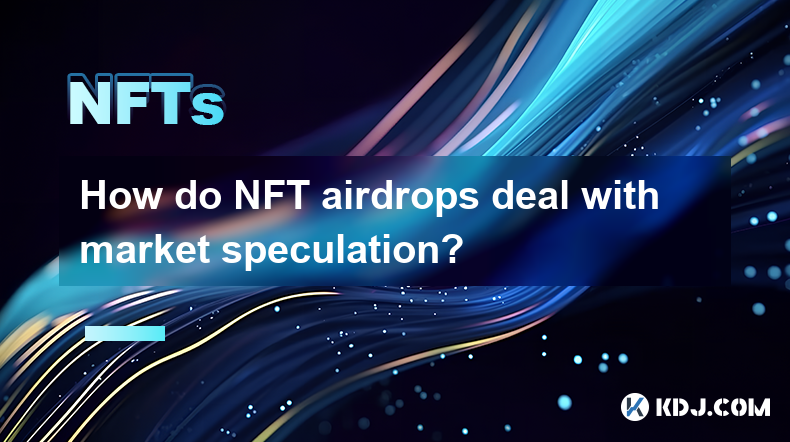
How do NFT airdrops deal with market speculation?
Apr 20,2025 at 10:28pm
NFT airdrops have become a significant phenomenon in the cryptocurrency space, often used as a marketing tool to distribute tokens or digital assets to a wide audience. However, they also introduce elements of market speculation that can impact the value and perception of NFTs. This article explores how NFT airdrops deal with market speculation, delving...
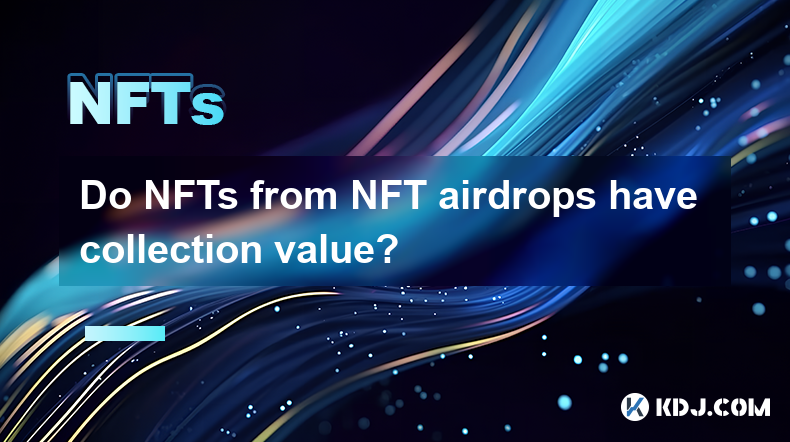
Do NFTs from NFT airdrops have collection value?
Apr 18,2025 at 11:49pm
NFTs, or non-fungible tokens, have become a significant part of the cryptocurrency ecosystem, and NFT airdrops are one way for projects to distribute these digital assets to their community. A common question that arises is whether NFTs received from airdrops have any collection value. To answer this question, we need to delve into various aspects of NF...
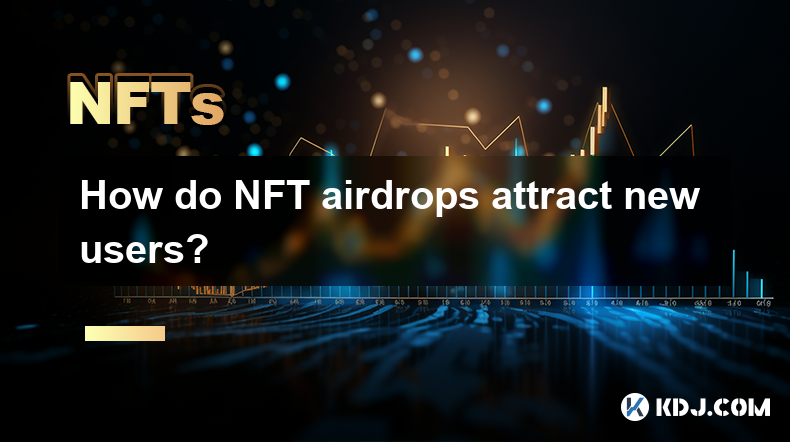
How do NFT airdrops attract new users?
Apr 21,2025 at 07:21am
NFT airdrops have become a popular strategy within the cryptocurrency community to attract new users and engage existing ones. By distributing free NFTs to a targeted audience, projects can create buzz, increase visibility, and foster a sense of community. This method leverages the allure of free digital assets to draw in participants who might not have...
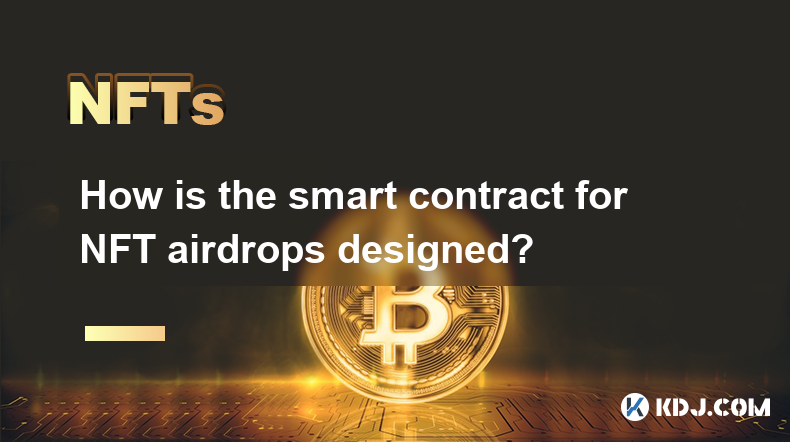
How is the smart contract for NFT airdrops designed?
Apr 18,2025 at 03:10am
The design of a smart contract for NFT airdrops is a complex process that requires careful consideration of various factors to ensure the airdrop is executed smoothly and securely. This article will delve into the intricacies of how such a smart contract is designed, focusing on key components, security measures, and the implementation process. Key Comp...

Will NFT airdrops affect the market value of NFT?
Apr 22,2025 at 06:56am
The impact of NFT airdrops on the market value of NFTs is a topic of significant interest within the cryptocurrency and digital asset community. NFT airdrops, where creators or platforms distribute free NFTs to a targeted group of recipients, can have various effects on the market value of NFTs. This article delves into the different ways NFT airdrops c...

How to display and trade NFTs from NFT airdrops?
Apr 18,2025 at 04:42am
How to Display and Trade NFTs from NFT Airdrops? NFT airdrops have become a popular way for projects to distribute their tokens and engage with their community. If you've received NFTs through an airdrop, you might be wondering how to display and trade them. This article will guide you through the process step-by-step, ensuring you can showcase your NFT...

How do NFT airdrops deal with market speculation?
Apr 20,2025 at 10:28pm
NFT airdrops have become a significant phenomenon in the cryptocurrency space, often used as a marketing tool to distribute tokens or digital assets to a wide audience. However, they also introduce elements of market speculation that can impact the value and perception of NFTs. This article explores how NFT airdrops deal with market speculation, delving...

Do NFTs from NFT airdrops have collection value?
Apr 18,2025 at 11:49pm
NFTs, or non-fungible tokens, have become a significant part of the cryptocurrency ecosystem, and NFT airdrops are one way for projects to distribute these digital assets to their community. A common question that arises is whether NFTs received from airdrops have any collection value. To answer this question, we need to delve into various aspects of NF...

How do NFT airdrops attract new users?
Apr 21,2025 at 07:21am
NFT airdrops have become a popular strategy within the cryptocurrency community to attract new users and engage existing ones. By distributing free NFTs to a targeted audience, projects can create buzz, increase visibility, and foster a sense of community. This method leverages the allure of free digital assets to draw in participants who might not have...

How is the smart contract for NFT airdrops designed?
Apr 18,2025 at 03:10am
The design of a smart contract for NFT airdrops is a complex process that requires careful consideration of various factors to ensure the airdrop is executed smoothly and securely. This article will delve into the intricacies of how such a smart contract is designed, focusing on key components, security measures, and the implementation process. Key Comp...

Will NFT airdrops affect the market value of NFT?
Apr 22,2025 at 06:56am
The impact of NFT airdrops on the market value of NFTs is a topic of significant interest within the cryptocurrency and digital asset community. NFT airdrops, where creators or platforms distribute free NFTs to a targeted group of recipients, can have various effects on the market value of NFTs. This article delves into the different ways NFT airdrops c...
See all articles























































































